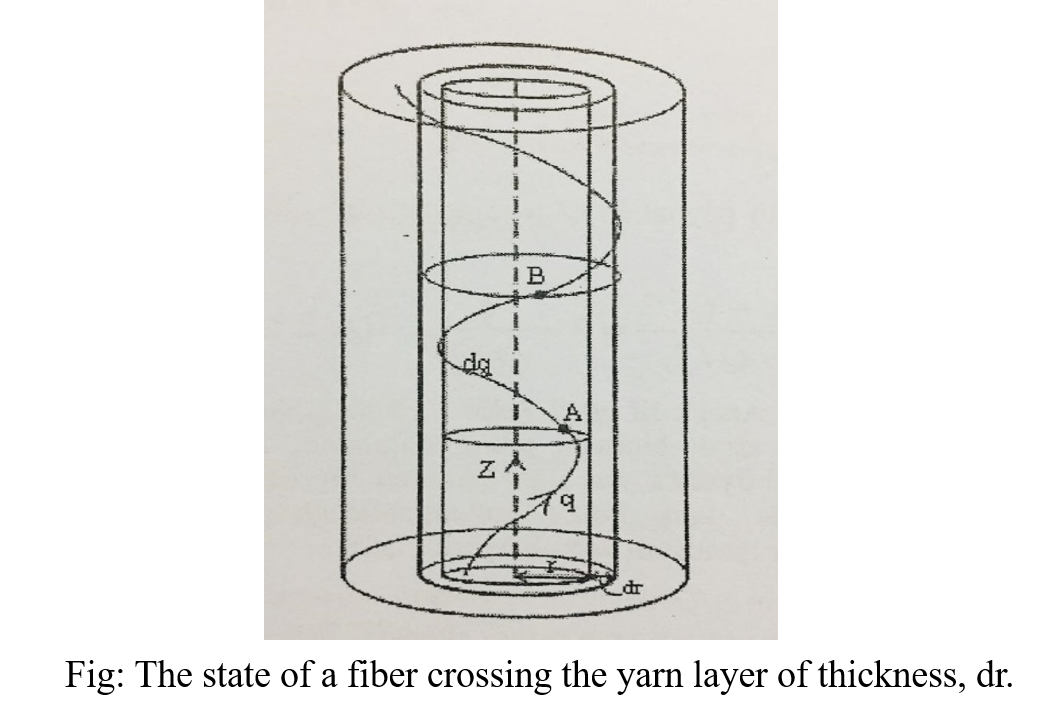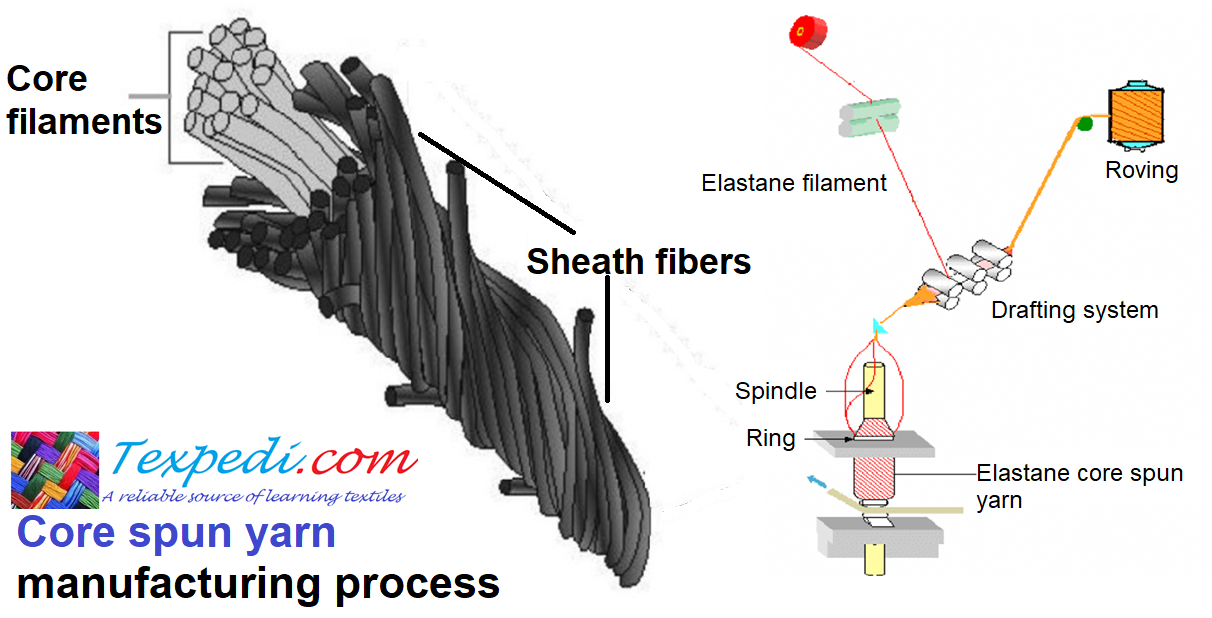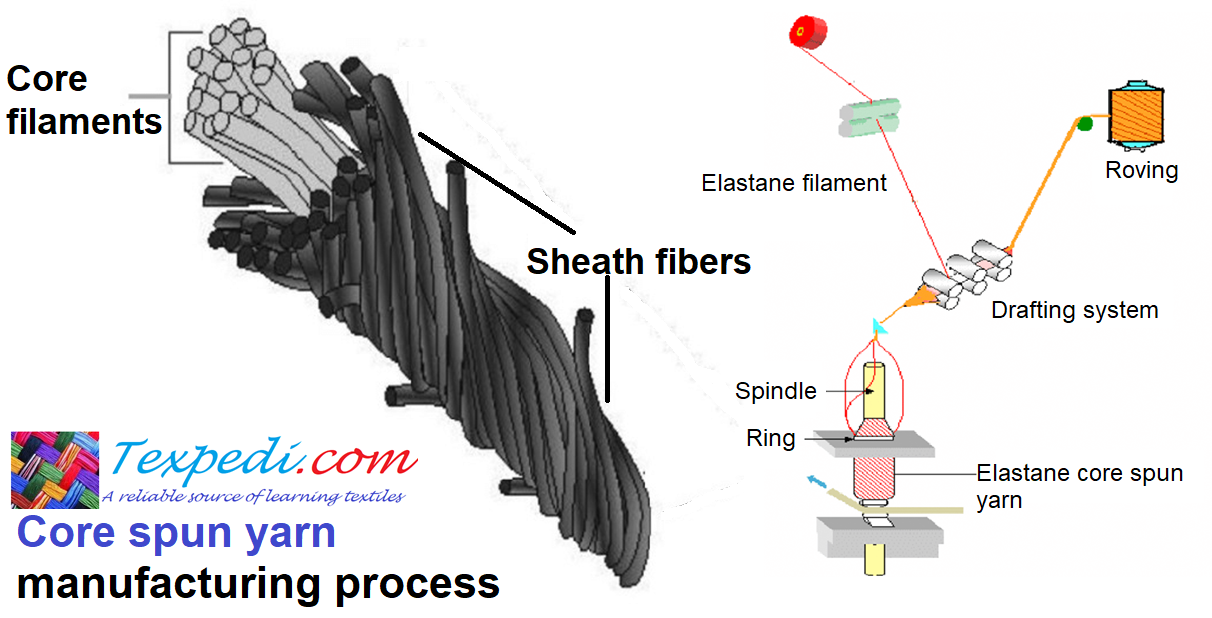The term fibre migration is used to describe the relative movement of fibre with respect to neighbouring fibres during the process of twist insertion into the fibre assembly and the ultimate position of the fibre in the final yarn structure.
Assumptions:
1. Migration only occurs when the tension in the central layer drops to zero and there is an accumulation of relaxation.
2. If the twist tension is high enough, the layer at the centre will always be under tension and migration will not occur.
3. However, if the twist tension is below a certain value, the excess length of the core thread will allow the tension of the core thread to be gradually reduced to zero, allowing relaxation resulting in migration.
Notations:
dr: the thickness of a cylindrical fibre layer.
dq: the length of a fibre moving from the outer surface of a cylindrical fibre layer to the inner surface of that layer.
r: radius of the fibre
A: exit point
B: entry point
v: volume of the layer
Then the following relation can be written from the volume of the cylinder.
v ∝ 2πr.dr……………………………(1)
On the other hand, by applying the rules of differential calculus, the following relation can also be written for the length of fibre crossing the layer of volume, v:
dq ∝ (dq/dr)dr……………………………(2)
Combining the two relations:
dq/dr ∝ r……………………………(3)
Taking the integration of equation (3):
q ∝ r2……………………………(4)
That means q changes linearly with the square of r.
Texpedi.com
Check out these related articles:









